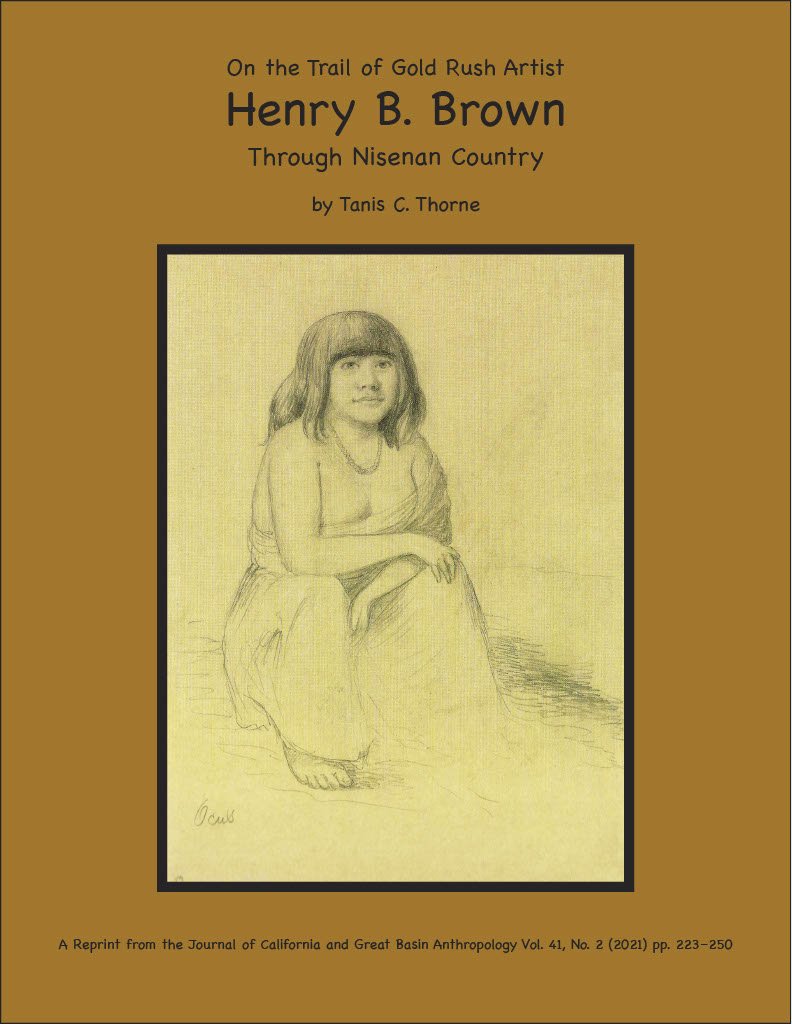On the Trail of Gold Rush Artist Henry B. Brown in Nisenan Country
Reprint from a peer-reviewed article in the Journal of California and Great Basin Anthropology Vol. 41, No. 2
(Fall 2021)
During Henry B. Brown’s brief 18 month sojourn in gold rush California, he made over 100 drawings of scenery, mining camps, and Native people.
This treasure trove, only recently rediscovered, includes widely-renowned drawings of indigenous Sacramento River Valley and adjacent Sierra Nevada foothill peoples in their homes and villages, representing the best ethnographic and artistic record of California Indian life in the brief interlude between contact and cultural and demographic collapse.
In this path-breaking and original study, Brown’s timely visit to Nisenan country in 1851-52 reveals many insights about Native life at a liminal moment in the tragic arc of their experience: the Treaty of Camp Union of 1851.
Walla hoo (Chief) JCB Bartlett Drawing No. 125.
Ocus, JCB Bartlett Drawing No. 162.
Tacolah (Chief) JCB Bartlett Drawing No. 136.
Courtesy of the John Carter Brown Library, Providence.
Creative Commons, Attribution-ShareAlike 4.0 International (CC BY-SA 4.0)
*Recommended to buy with Thomas Blackburn’s An Artist’s Portfolio: The California Sketches of Henry B. Brown, 1851-1852 (Banning, CA: Malki-Ballena Press. 2006)
Primarily aimed at a general, regional audience, this book will also be useful for teachers and academics.
“Thorne shows how the development of industrial mining dispossessed Indians and limited their ability to survive in a landscape that had become hostile to them. Written for a general audience, this book will also be useful for seasoned scholars. A little book that taught me a lot.”
- Albert L. Hurtado, historian
“This copiously illustrated and meticulously documented book is a major contribution to California ethnohistory and an impressive piece of historical reconstruction. Tanis Thorne sheds new light on a Native community —largely forgotten by history— nearly destroyed by the cataclysmic events that characterized the Gold Rush. This richly detailed story of Nisenan survival in the face of overwhelming odds brings a specific time, place, and group of people to vivid life.”
- Thomas Blackburn, anthropologist

